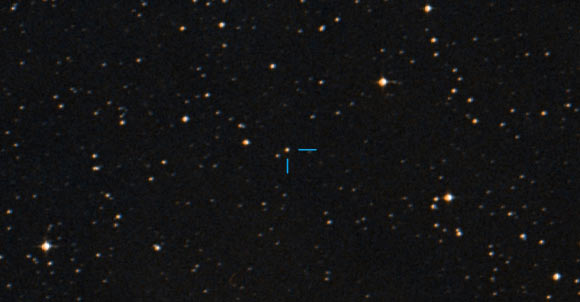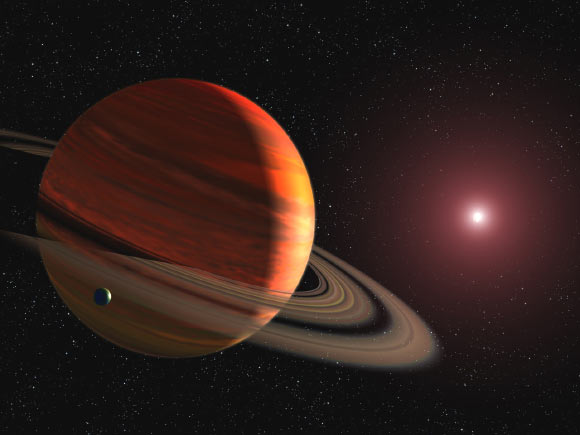Astronomers Discover Nearest-Known Newborn Gas Giant | Astronomy – Sci-News.com
Astronomers using data from ESA’s Gaia star-mapping satellite have discovered a newborn gaseous exoplanet closer to Earth than any other of similarly young age found to date.
The newly-discovered planet, designated 2MASS J11550336-7919147 (2MASS J1155-7919b for short), is about 10 times the mass of Jupiter.
It orbits its host star, 2MASS J11550485-7919108 (for short 2MASS J1155-7919), also known as T Chamaeleontis B, at a distance of 600 AU.
The system is a member of the epsilon Chamaeleontis Association, a 3-5-million-year-old moving group of stars located about 330 light-years away from us.
“The dim, cool object we found is very young and only 10 times the mass of Jupiter, which means we are likely looking at an infant planet, perhaps still in the midst of formation,” said Annie Dickson-Vandervelde, a Ph.D. student in the School of Physics and Astronomy at Rochester Institute of Technology.
Dickson-Vandervelde and her colleagues from Rochester Institute of Technology used data from the Gaia DR2 archive to make the discovery.

This image shows the young star 2MASS J11550485-7919108. Image credit: Centre de Données astronomiques de Strasbourg / SIMBAD / DSS2.
“Though lots of other planets have been discovered through the Kepler mission and other missions like it, almost all of those are ‘old’ planets,” Dickson-Vandervelde said.
“This is also only the fourth or fifth example of a giant planet so far from its parent star, and theorists are struggling to explain how they formed or ended up there.”
How this young, giant planet could have ended up so far away from its young parent star is a mystery.
The astronomers hope that follow-up imaging and spectroscopy will help them understand how massive planets can end up in such wide orbits.
“Given that 2MASS 1155-7919b is quite possibly the youngest massive planet within 330 light-years — i.e., closer to Earth than other known massive young planets, as well as nearby star-forming clouds — this object is richly deserving of follow-up spectroscopy and imaging aimed at confirming its spectral type, age, and luminosity, in order to better understand its nature and origin,” they said.
The discovery is reported in a paper in the Research Notes of the American Astronomical Society.
_____
D. Annie Dickson-Vandervelde et al. 2020. Identification of the Youngest Known Substellar Object within 100 pc. Res. Notes AAS 4, 25; doi: 10.3847/2515-5172/ab7344






